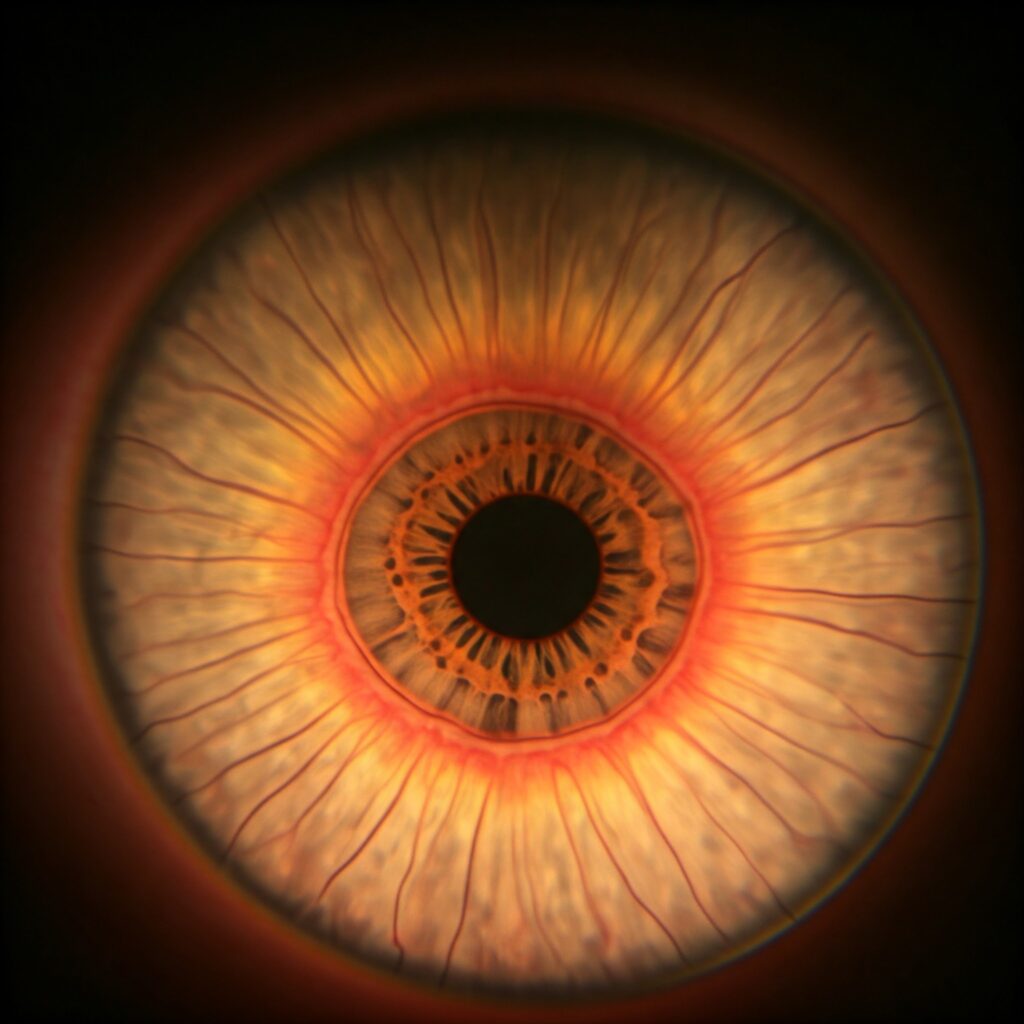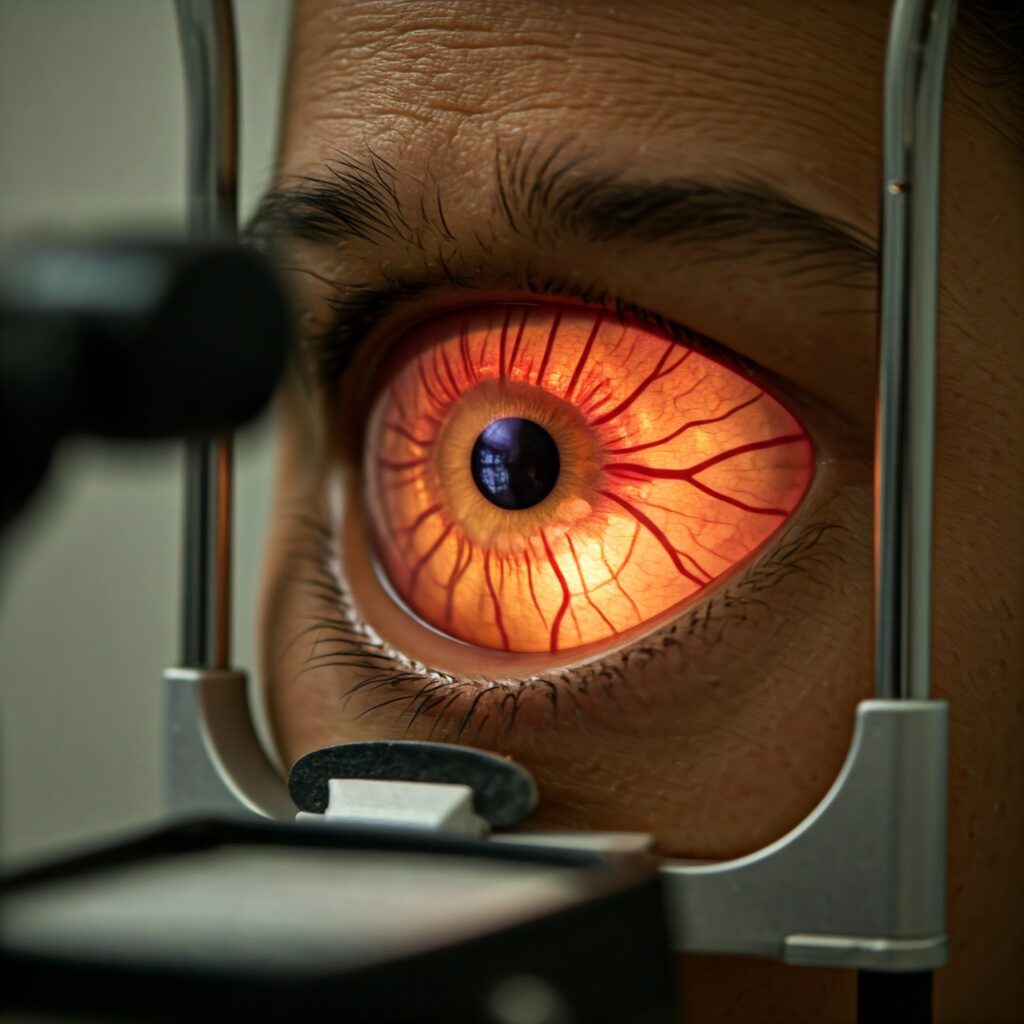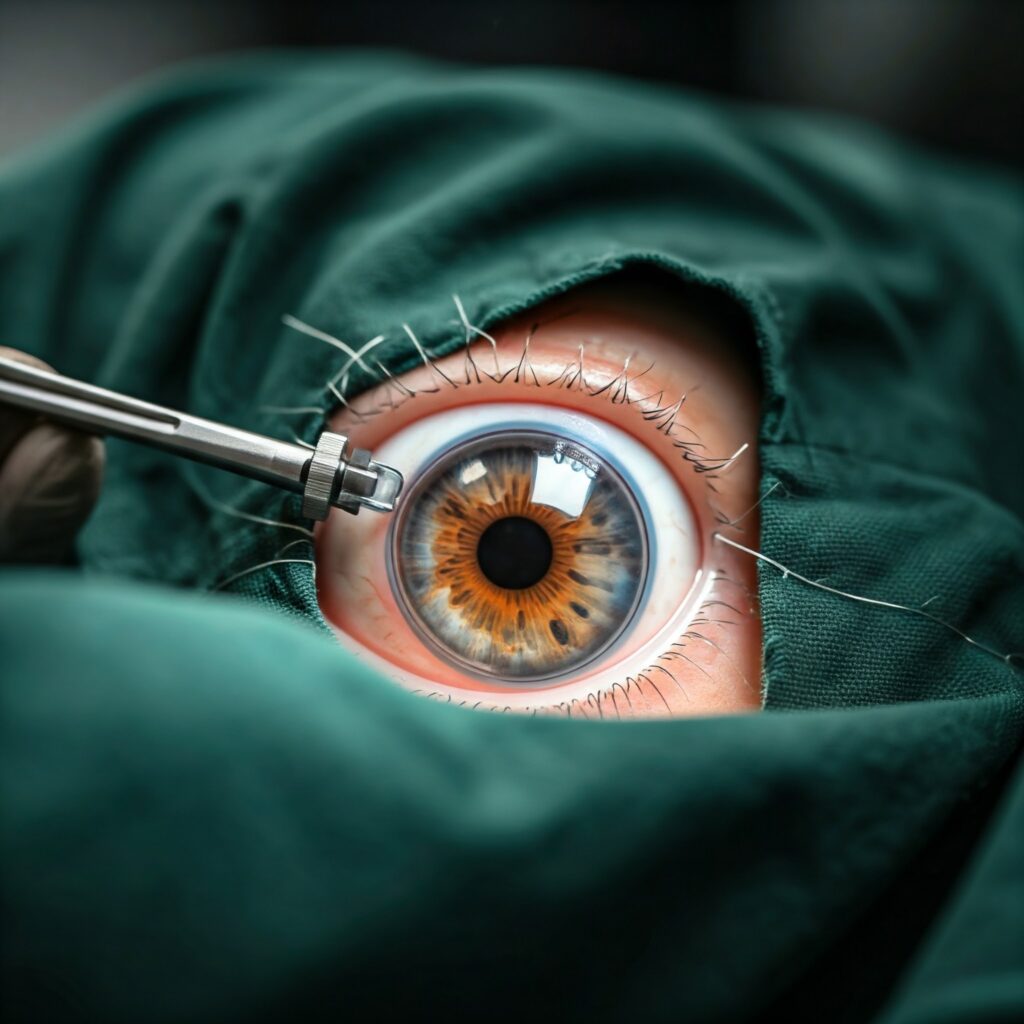Nuclear Cataracts
Nuclear cataract form in the central (nuclear) zone of the eye’s lens. Over time, this central area becomes yellow or brown, leading to blurred vision and difficulty seeing clearly. This type of cataract is most commonly associated with aging and can significantly affect your ability to perform everyday tasks like reading or driving.

Causes and Risk Factors
The primary cause of nuclear cataract is aging. As we grow older, proteins in the lens of the eye begin to break down and clump together, leading to clouding in the central part of the lens. Other contributing factors include smoking, excessive alcohol use, and exposure to ultraviolet (UV) rays
Age’s Effect on Nuclear Cataracts
Aging is the single largest factor in the development of nuclear cataract. The natural wear and tear on the lens over decades lead to gradual clouding. Most cases of nuclear cataracts appear after the age of 60, although early changes may begin much earlier
Genetics’ Role in Nuclear Cataracts
Your genetic makeup can also play a role in determining your risk of developing nuclear cataract. If close family members have experienced cataracts, you may have a higher likelihood of developing them as well
Symptoms and Diagnosis
The earliest sign of nuclear cataracts is often a gradual blurring of vision. As the condition progresses, you may notice increased difficulty seeing at night, sensitivity to bright lights, and a general dulling of colors
Blurry Vision
Blurry vision can be caused by many conditions, but with nuclear cataract, the blurriness tends to worsen over time. If you notice this symptom, particularly if it affects tasks like reading or recognizing faces, it’s worth consulting an eye care professional
Diagnose Nuclear Cataracts
Doctors use a combination of tools to diagnose nuclear cataract, including:
- Visual acuity tests to measure how well you can see.
- Slit-lamp examinations to observe the structure of the eye.
- Dilated eye exams to get a closer look at the lens and surrounding tissues

Effects of Nuclear Cataracts on Day-to-Day Life
One hallmark effect of nuclear cataract is that colors may appear dull or yellowed. Everyday objects can seem less vibrant, which can impact activities like cooking, art, or even selecting matching outfits
The visual impairments caused by nuclear cataract can make simple tasks like reading, driving, or even walking in low light more challenging. Left untreated, this can lead to a decline in independence and quality of life.
Treatment Options
- Unfortunately, there’s no way to reverse nuclear cataract once they develop. However, their progression can be slowed with proper care, and surgical treatment can restore vision in most cases.
- The most effective treatment for nuclear cataract is modern cataract surgery, where the cloudy lens is replaced with an artificial intraocular lens (IOL). This procedure is highly successful, offering a dramatic improvement in vision for most patients.
- If surgery isn’t an immediate option, wearing stronger prescription glasses, using brighter lighting, and minimizing glare can help you manage nuclear cataract and maintain your daily routine

Prevention and Management
- While aging is inevitable, certain lifestyle changes can help reduce the risk of developing nuclear cataracts. Avoid smoking, limit alcohol intake, and protect your eyes from UV rays.
- A diet rich in antioxidants like vitamins C and E can support lens health and potentially delay the onset of nuclear cataracts. Foods such as spinach, carrots, and citrus fruits are excellent choices.
- Wearing sunglasses that block 100% of UV rays is one of the simplest yet most effective ways to protect your eyes from developing nuclear cataracts due to sun exposure
Advanced Insights
As medical research advances, scientists are exploring new ways to delay the onset of nuclear cataracts or improve surgical outcomes. Additionally, technologies like laser-assisted cataract surgery are making treatment safer and more precise than ever
